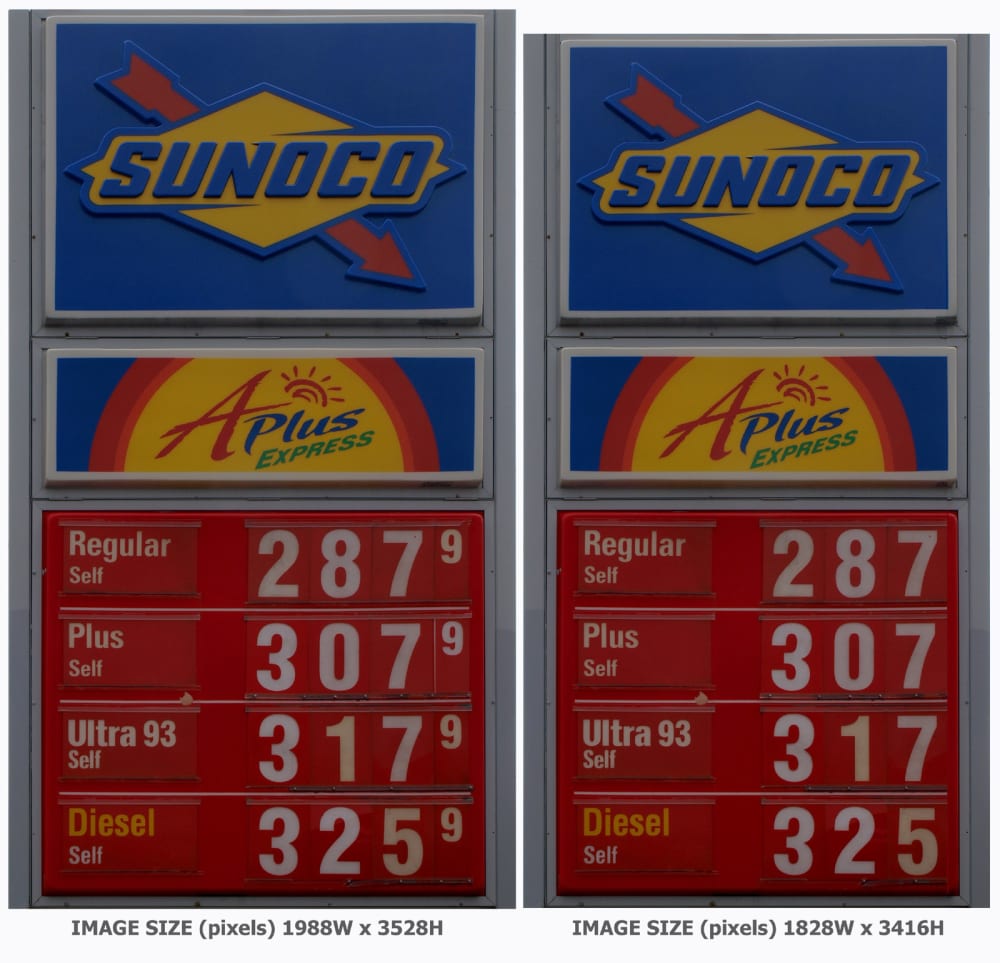One of the simplest elements of sustainability is waste reduction. We can significantly reduce energy usage and plastics consumption by eliminating "9/10ths" gas pricing, especially from digital LED signs. These are powered 24/365, and although the LEDs are very low-wattage, the cumulative amount of electricity used to power the 9/10 LEDs is surprisingly large, given the large number of gas stations using digital signs. Based on two examples, I've calculated our national electricity usage for powering just the 9/10 LEDs at over 26 million KWH yearly !! That energy could power 2,600 homes for a year, and at $0.08 per KWH, would cost 2 million dollars !
Traditional price displays often consist of printed plastic signboards in metal frames, with tracks holding individual plastic numeral panels, which are then combined to display the price. By eliminating the 9/10 numeral panels, plastic usage would be reduced for both numeral panels and signboards. Based on measured examples, overall signboard size could be reduced by ~10%. And eliminating the need for plastic 9/10 numeral panels could save 3,400 4x8 sheets of plastic; a stack 28 feet high, weighing over 33 tons !!
No retrofitting of existing signage is required, and future signs would be smaller, using less material. For existing signage, digital displays can be reprogrammed to turn off the 9/10 LEDs, immediately using less power. And for plastic signs, the 9/10 numeral panels can be removed, and the demand for plastic 9/10 numeral panels drops to zero.
The reductions in electricity and plastics usage as a result of eliminating 9/10ths pricing will continue to accrue over time. It's a simple action that requires very little effort, stops a wasteful, unnecessary practice, and over the course of time results in significant energy and materials savings.
However, when rounding up the prices, we must consider where the 1/10th goes. According to the Department of Energy, in the USA we use 378 million gallons of gasoline daily. A $0.001 price increase amounts to almost $138 million dollars yearly ! It could be mandated that the oil companies collect and use this amount to develop sustainable energy technologies. Or the government could collect and apply the $0.001 increase to lower the deficit. Implementing such a sweeping change might be accomplished through a grass-roots movement, or it may require government intervention, but it's time to practice one of our oldest proverbs: WASTE NOT, WANT NOT !
Like this entry?
-
About the Entrant
- Name:Steve Goldberg
- Type of entry:individual
- Hardware used for this entry:Olympus E520, Dell Precision 670Software used for this entry:Photoshop, Word97, Page Plus, Acrobat
- Patent status:none








